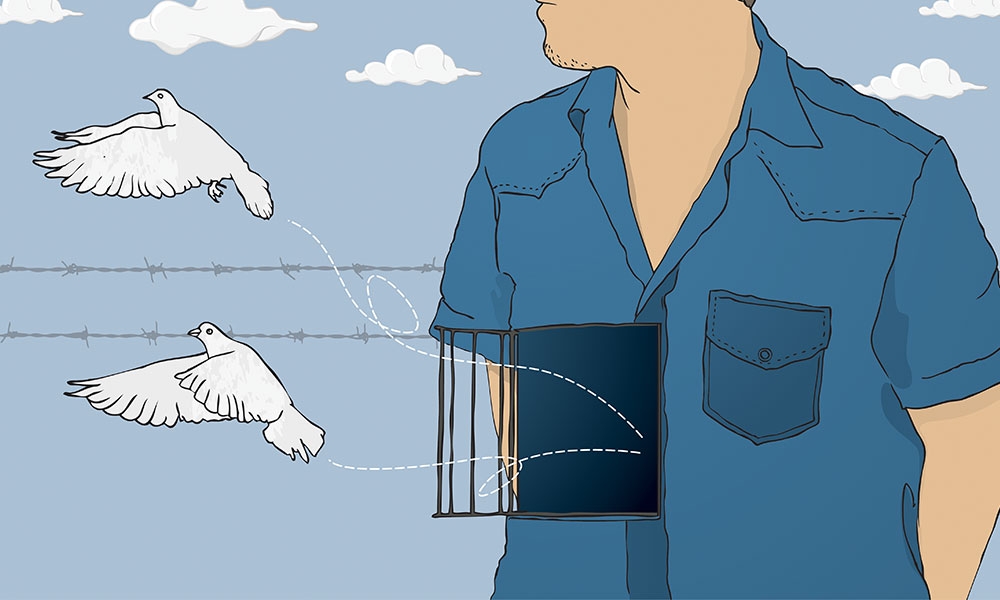
Capital punishment: How can we call this justice?
In our state, the penalty for the most severe crimes is death — at least for those who cannot legally maneuver out of it. The state offers three methods of execution: electric chair, lethal injection and firing squad. Each of these methods is designed to end life swiftly, yet all raise serious moral and ethical questions.
In our state, the penalty for the most severe crimes is death — at least for those who cannot legally maneuver out of it. The state offers three methods of execution: electric chair, lethal injection and firing squad. Each of these methods is designed to end life swiftly, yet all raise serious moral and ethical questions.
While the state upholds capital punishment as a form of justice and deterrence, the Catholic Church condemns it as a violation of human dignity. This contrast reveals a major debate in society about the nature of justice, mercy and the value of human life.
Electricity
The electric chair has long been an iconic means of execution in our state. In this method, the condemned person is strapped to a wooden chair with electrodes attached to his or her head and legs. When a switch is thrown, a massive electric current courses through the person’s body, causing excruciating pain, severe burns and catastrophic damage to the heart and nervous system. The goal is immediate unconsciousness followed by death, but botched electrocutions in many places have resulted in prolonged agony, raising additional serious ethical concerns.
Chemicals
Lethal injection, the most common method in the United States, involves administering a sequence of drugs — an anesthetic and a paralytic, then a drug to induce cardiac arrest. Though intended and thought to be more humane, in practice it has often led to extreme suffering due to improper administration. Cases of long and painful deaths from botched injections highlight the method’s inherent flaws and challenge claims of it being humane.
Firearms
Recently, South Carolina revived the use of the firing squad, due to difficulties in obtaining lethal injection drugs. In this method, the condemned is seated and restrained in front of a group of marksmen who fire into a target placed on the chest area around the heart. While some argue this ensures a swift death, it remains a gruesome and violent spectacle. The very idea of execution by gunfire as a “humane alternative” demonstrates the brutality of capital punishment as a practice. Brad Sigmon, who was executed by South Carolina via this method on March 7, chose it out of fear that he would suffer if he chose lethal injection.
Historically, the Catholic Church accepted capital punishment as a means of maintaining order and justice, aligning with St. Augustine’s “Just War Theory.” Thinkers like Augustine and St. Thomas Aquinas argued that the state has the authority to use force, including the death penalty, to protect the common good. These arguments were based on the belief that certain crimes pose such a grave threat to society that execution serves as both deterrence and retribution.
As moral theology has continued to develop, however, the Church recognized that modern penal systems can effectively protect society without resorting to execution. Life without parole is an option in all 50 U.S. states.
St. John Paul II, in Evangelium Vitae (Gospel of Life), declared that cases where capital punishment is necessary are “very rare, if not practically nonexistent.” Pope Benedict XVI continued advocating for a culture of life, urging governments to seek alternatives to the death penalty. Pope Francis further advanced this stance by declaring capital punishment is entirely unacceptable, emphasizing mercy and human dignity.
The Church’s opposition to the death penalty is grounded in several key principles. The first of these is the sanctity of life. All human life is sacred, even those whom the state has deemed unfit to live. The Catechism of the Catholic Church states that “there is an increasing awareness that the dignity of the person is not lost even after the commission of very serious crimes. … Consequently, the Church teaches, in the light of the Gospel, that ‘the death penalty is inadmissible because it is an attack on the inviolability and dignity of the person,’ and she works with determination for its abolition worldwide” (2267).
The Catholic Church emphasizes mercy and forgiveness over retribution, in alignment with Christ’s teachings. The risk of wrongful executions also undermines the moral justification for capital punishment.
Each of South Carolina’s execution methods falls short of Catholic Christian principles. Whether through the electric chair’s violent destruction of the body, prolonged suffering caused by lethal injection, or the brutal spectacle of the firing squad, a fundamental issue remains — capital punishment contradicts the Church’s call to uphold the sanctity of life.
While the state argues that execution is justice, Catholic teaching urges alternatives that respect human dignity and allow for redemption. The contrast between the state’s stance and the Church’s doctrine tells us that we have a lot of work to do if we are going to answer Pope Francis’ call to abolish capital punishment in South Carolina and around the world.
Brian Hansen is a parishioner of Our Lady of the Rosary Church in Greenville, where he is an acolyte. He serves in prison ministry and is in formation for the permanent diaconate. Email him at bphansen65@gmail.com.
